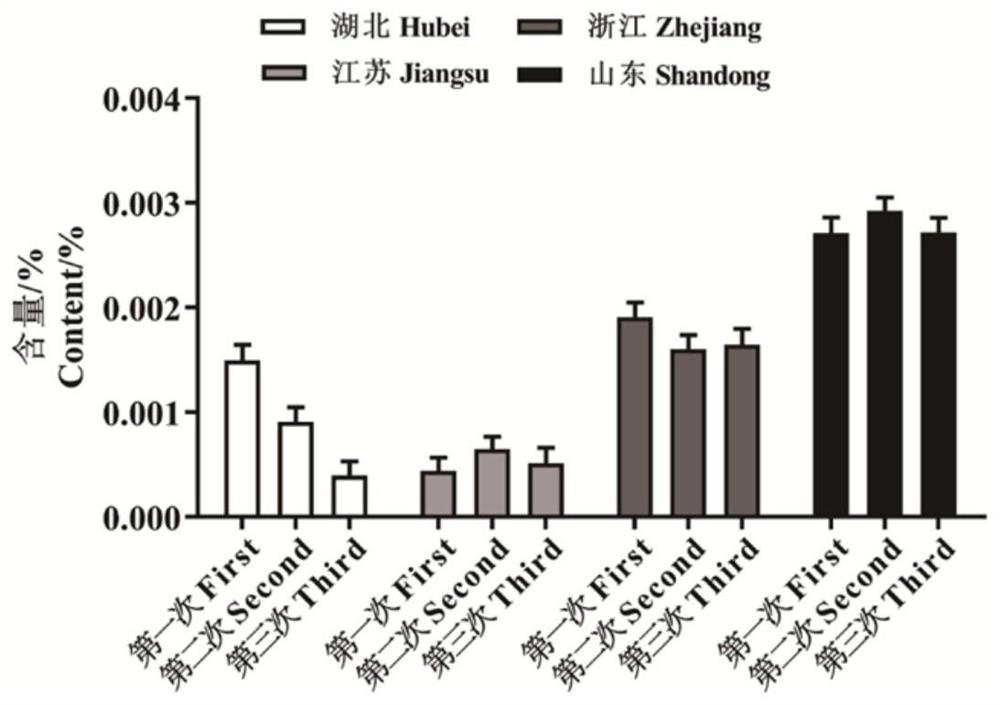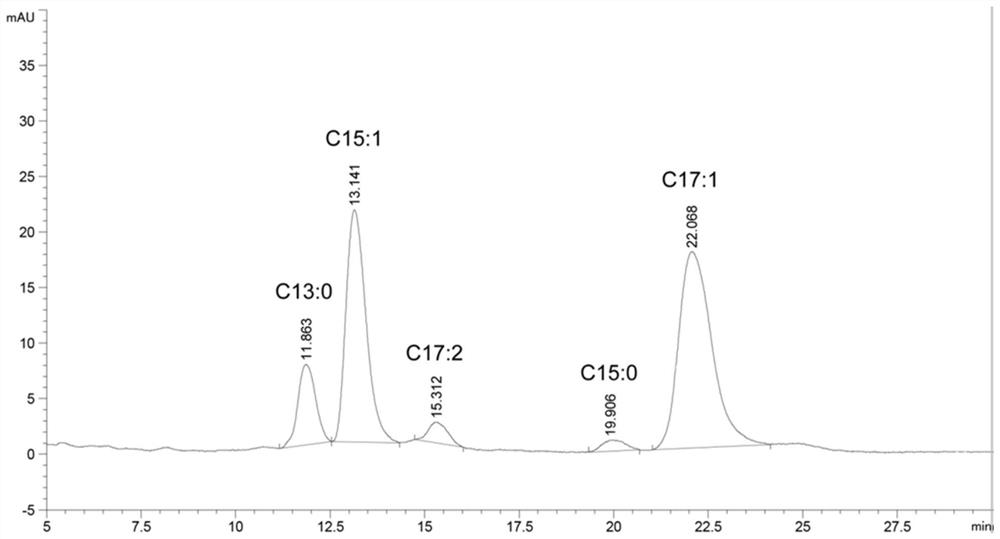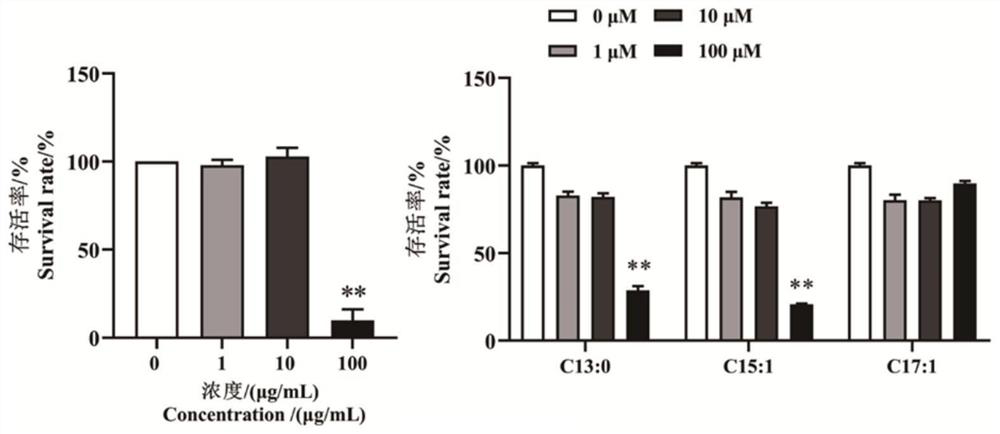Application of Celtis sinensis Pers. and extract thereof in gingko-related products
A technology of extract and hackberry, which is applied in the field of application of hackberry and its extracts in ginkgo-related products, can solve the problems that ginkgolic acid has not been systematically elucidated, and it is difficult to apply processing technology, so as to inhibit allergic reactions and reduce proliferation inhibition The effect of action
- Summary
- Abstract
- Description
- Claims
- Application Information
AI Technical Summary
Problems solved by technology
Method used
Image
Examples
Embodiment 1
[0026] 1. Purpose of the experiment
[0027] To compare the amount of ginkgolic acid leached during brewing of different brands of ginkgo tea.
[0028] 2. Experimental materials
[0029] Ginkgo tea was purchased from four producing areas in Hubei, Jiangsu, Zhejiang and Shandong, among which the ginkgo tea in Hubei and Jiangsu was in the form of leaves, and the ginkgo tea in Zhejiang and Shandong was in the form of powdered tea bags; the standard products of total ginkgolic acid and ginkgo new acid were purchased in Nanjing King Bamboo Biotechnology Co., Ltd.
[0030] 3. Experimental protocol
[0031] Extraction method of total ginkgolic acid when brewing ginkgo tea: Take 15g of ginkgo tea from four different origins, weigh them precisely, put them into a thermos cup, add 200mL of 100°C boiling water to make tea, keep warm in a constant temperature water bath for 15min, filter , Collect tea water and tea dregs separately. Continue to add 200mL of boiling water at 100°C to t...
Embodiment 2
[0037] 1. Purpose of the experiment
[0038] To elucidate the hepatotoxicity and immunotoxicity of ginkgolic acid.
[0039] 2. Experimental materials
[0040] DMEM medium, RPMI 1640 medium, PBS phosphate buffer (Gibco); fetal bovine serum (Fetal BovineSerum, FBS, Hyclone); trypsin digestion solution (Beyond Biotechnology); trypan blue (Aladdin reagent); thiazole Blue (MTT, Sigma); human liver cancer cells HepG2 were purchased from the Cell Bank of the Type Culture Collection Committee of the Chinese Academy of Sciences.
[0041] Clean-grade Balb / c mice, female, 6 weeks old, weighing 20±2g, were provided by the Comparative Medicine Center of Yangzhou University. Randomly divided into 2 groups, 8 in each group. They were divided into a control group (Sham.) and a ginkgolic acid experimental group (S.c.). They were raised at 21±2°C, with free access to food and water, and 12 hours of day and night alternation. The experimental operation of animals was strictly in accordance w...
Embodiment approach
[0043] 3.1 MTT method to detect the proliferation of HepG2 cells
[0044] HepG2 cells were cultured in DMEM (containing 10% FBS), 37°C, 5% CO 2 cultured under sterile conditions. Inoculate 4×10 per well in a 96-well plate 3 100 μL of HepG2 cells were cultured in DMEM complete medium at 37°C (5% CO 2 ), after the cells adhered to the wall for 6 hours, different concentrations of drugs were added to each well and cultured for another 72 hours. Add 20 μL of MTT (4 mg / mL) solution 4 hours before terminating the culture. After 4 hours, the supernatant was aspirated, and 200 μL of DMSO was added to each well, shaken, and the absorbance was detected at 540 nm, and the reading was recorded. Survival rate (%)=(ODcontrol-ODsample) / ODcontrol×100
[0045] 3.2 Mouse popliteal lymph node model
[0046] The two groups were subcutaneously injected on the right lower footpad of the mice on D0 respectively. The ginkgolic acid group was given 20 μL of 1 mg total ginkgolic acid, and the con...
PUM
 Login to View More
Login to View More Abstract
Description
Claims
Application Information
 Login to View More
Login to View More - R&D
- Intellectual Property
- Life Sciences
- Materials
- Tech Scout
- Unparalleled Data Quality
- Higher Quality Content
- 60% Fewer Hallucinations
Browse by: Latest US Patents, China's latest patents, Technical Efficacy Thesaurus, Application Domain, Technology Topic, Popular Technical Reports.
© 2025 PatSnap. All rights reserved.Legal|Privacy policy|Modern Slavery Act Transparency Statement|Sitemap|About US| Contact US: help@patsnap.com



